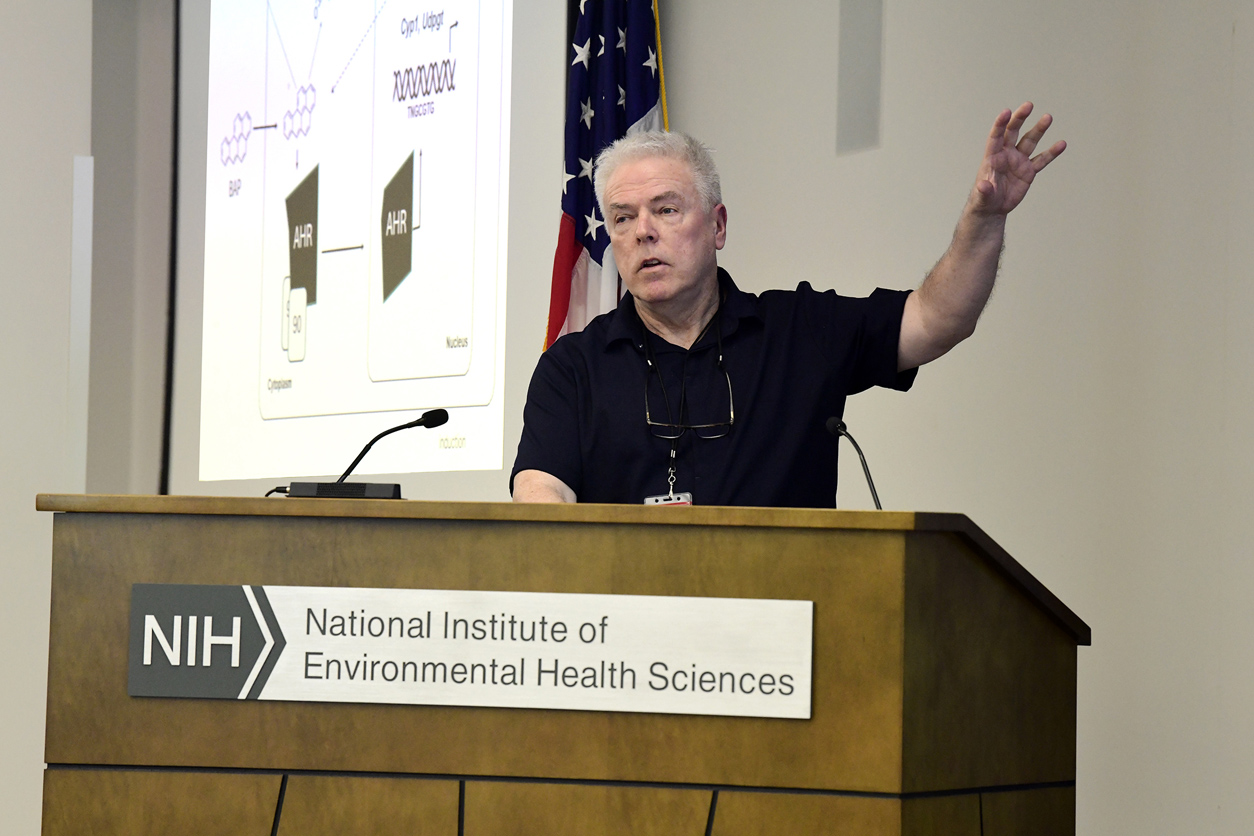WA fines US Postal Service $33K for mishandling dangerous waste in Seattle – MyNorthwest.com

Report on Hazardous Waste Management Violations at the U.S. Postal Service Seattle Facility and Alignment with Sustainable Development Goals (SDGs)
Incident Overview
The Washington Department of Ecology has issued a $33,000 penalty to the United States Postal Service (USPS) for significant violations concerning the management of dangerous waste at its Seattle Bulk Mail Center. This action highlights critical failures in adhering to environmental regulations, directly impacting several United Nations Sustainable Development Goals (SDGs).
Violations and Sustainable Development Goal Implications
An inspection conducted in 2024 by the Department of Ecology identified multiple regulatory breaches. These violations represent a direct challenge to the achievement of key SDGs, particularly those concerning environmental health and responsible production. The improperly managed materials included items such as:
- Insecticides
- Propane
- Paints
- Cleaning products
The specific violations noted have profound implications for several SDGs:
- Failure to promptly determine and identify waste hazards: This oversight contravenes the principles of SDG 12 (Responsible Consumption and Production), which calls for the environmentally sound management of chemicals and all wastes throughout their life cycle to minimize their adverse impacts on human health and the environment.
- Failure to store waste safely: Improper storage poses a direct threat to SDG 3 (Good Health and Well-being) by endangering the health of facility personnel and the public. It also undermines SDG 11 (Sustainable Cities and Communities) by increasing the risk of environmental contamination within the community.
- Improper management of universal waste: This is a further breach of the waste management targets outlined in SDG 12.
- Inability to maintain personnel training records: A lack of documented training compromises workplace safety, conflicting with the objectives of SDG 8 (Decent Work and Economic Growth), which promotes safe and secure working environments for all workers.
Regulatory Action and Institutional Accountability (SDG 16)
The enforcement action by the Department of Ecology aligns with SDG 16 (Peace, Justice, and Strong Institutions), which emphasizes the need for effective, accountable, and transparent institutions at all levels. The penalty serves to hold the USPS accountable for its environmental responsibilities. This incident is not isolated; inspections in 2018, 2019, and 2022 also revealed persistent issues with hazardous waste management at the facility.
Christa Colouzis, a manager with the Department of Ecology, stated, “If dangerous waste isn’t properly managed, it can quickly become a safety issue for people and the environment,” reinforcing the connection between regulatory compliance and the broader goals of public and environmental health.
Corrective Actions and Path Forward
The Department of Ecology has confirmed that the USPS has rectified the violations requiring immediate attention. The postal service has a 30-day period to remit the penalty or file an appeal. Sustained compliance and improved internal processes are imperative for the USPS to fully align its operations with its responsibilities under national environmental law and the global framework of the Sustainable Development Goals. Continuous oversight will be essential to ensure these corrective measures are permanent and effective in protecting both human health and the environment.
Analysis of Sustainable Development Goals (SDGs) in the Article
1. Which SDGs are addressed or connected to the issues highlighted in the article?
- SDG 3: Good Health and Well-being: The article highlights the risk to human health posed by the improper management of dangerous materials. The statement, “If dangerous waste isn’t properly managed, it can quickly become a safety issue for people and the environment,” directly connects the issue to public health and well-being.
- SDG 8: Decent Work and Economic Growth: The violations point to an unsafe working environment for the employees at the Seattle Bulk Mail Center. The “inability to maintain personnel training records” suggests a failure to ensure workers are equipped to handle hazardous materials safely, which is a key aspect of decent work.
- SDG 12: Responsible Consumption and Production: This is the most central SDG addressed. The entire article focuses on the failure of the US Postal Service to achieve “environmentally sound management of chemicals and all wastes,” as evidenced by the fine for improperly managing and storing packages containing dangerous waste like insecticides, propane, and paints.
- SDG 16: Peace, Justice and Strong Institutions: The article demonstrates the function of strong institutions. The Washington Department of Ecology, a state institution, is holding the US Postal Service, a federal entity, accountable through inspections and financial penalties ($33,000 fine) for violating environmental regulations. This reflects the principle of effective and accountable governance.
2. What specific targets under those SDGs can be identified based on the article’s content?
-
Target 3.9: By 2030, substantially reduce the number of deaths and illnesses from hazardous chemicals and air, water and soil pollution and contamination.
- The article’s focus on the improper management of “dangerous materials such as insecticides, propane, paints, or cleaning products” directly relates to this target. The failure to handle these materials safely increases the risk of contamination and subsequent illnesses for both workers and the public.
-
Target 8.8: Protect labour rights and promote safe and secure working environments for all workers.
- The identified violations, including the “failure to store waste safely” and the “inability to maintain personnel training records,” point to an unsafe working environment. This directly contravenes the goal of ensuring worker safety, especially for those handling potentially hazardous materials.
-
Target 12.4: By 2020, achieve the environmentally sound management of chemicals and all wastes throughout their life cycle… and significantly reduce their release to air, water and soil in order to minimize their adverse impacts on human health and the environment.
- This target is at the core of the article. The US Postal Service was fined specifically for “improperly managing and storing packages that contained dangerous waste.” The violations cited, such as the “failure to promptly determine whether waste is hazardous,” are direct failures in achieving the environmentally sound management of waste.
-
Target 16.6: Develop effective, accountable and transparent institutions at all levels.
- The actions of the Washington Department of Ecology exemplify this target. By conducting regular inspections (in 2018, 2019, 2022, and 2024) and issuing a “$33,000 penalty,” the department is acting as an effective and accountable institution that enforces regulations.
3. Are there any indicators mentioned or implied in the article that can be used to measure progress towards the identified targets?
Yes, several indicators are mentioned or can be directly inferred from the article:
-
For Target 12.4:
- Number of violations for hazardous waste management: The article explicitly states that inspections in “2018, 2019, 2022, and 2024 all discovered issues,” which serves as a recurring indicator of non-compliance.
- Financial penalties for environmental non-compliance: The “$33,000” fine is a specific, quantitative indicator of the severity of the violations.
- Compliance with waste identification procedures: The “failure to promptly determine whether waste is hazardous and to identify the associated hazards” is a specific procedural failure that can be tracked as an indicator.
-
For Target 8.8:
- Records of personnel training: The “inability to maintain personnel training records” is a direct indicator of a failure to ensure a safe working environment through proper employee education. Progress could be measured by the successful maintenance and verification of these records.
-
For Target 16.6:
- Number of enforcement actions taken by regulatory bodies: The issuance of the fine by the Department of Ecology is an indicator of an institution’s effectiveness in enforcing laws and holding other entities accountable.
-
For Target 3.9:
- Incidents of improper storage of hazardous materials: The “failure to store waste safely” is an indicator of the potential risk of exposure to hazardous chemicals that could lead to illness. Tracking the reduction of such incidents would measure progress.
4. Table of SDGs, Targets, and Indicators
| SDGs | Targets | Indicators Identified in the Article |
|---|---|---|
| SDG 12: Responsible Consumption and Production | 12.4: Achieve the environmentally sound management of chemicals and all wastes. |
|
| SDG 8: Decent Work and Economic Growth | 8.8: Promote safe and secure working environments for all workers. |
|
| SDG 3: Good Health and Well-being | 3.9: Substantially reduce illnesses from hazardous chemicals and pollution. |
|
| SDG 16: Peace, Justice and Strong Institutions | 16.6: Develop effective, accountable and transparent institutions. |
|
Source: kiro7.com

What is Your Reaction?
 Like
0
Like
0
 Dislike
0
Dislike
0
 Love
0
Love
0
 Funny
0
Funny
0
 Angry
0
Angry
0
 Sad
0
Sad
0
 Wow
0
Wow
0














































.jpg.webp?itok=0ZsAnae9#)







:focal(1500,1000)/https://media.globalcitizen.org/a6/9a/a69a4720-d8a1-4715-b596-18738d03c05c/rotary_polio_hero_image.jpg?#)

/countries/sri-lanka/photo-credit---dmc-sri-lanka.tmb-1200v.jpg?sfvrsn=dc298bcc_1#)



















